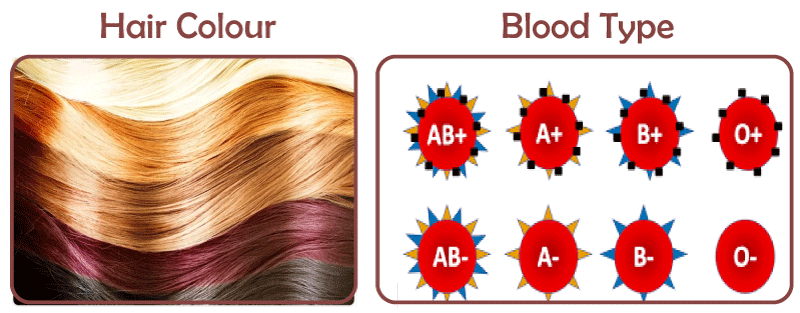Difference Between Acquired and Inherited TraitsIntroductionDuring a person's lifespan, they acquire certain traits. They need to be handed on from one generation to the next. Hereditary traits are passed on from generation to generation, and these traits are inherited traits present in the person from birth. The qualities that a person acquires throughout the course of their lifetime are known as acquired traits. They do not get handed down from one generation to the next. Contrarily, hereditary qualities have been a part of a person's makeup from birth and are carried on by future generations. The physical demonstration of a DNA-encoded gene is hence known as a phenotype. A person's traits, including their hair color or blood type, make them unique. Phenotyping is influenced by both the interactions between genes and their environment. It's important to remember that our genes are designed to act as signal transmitters in our DNA, defining our distinct personalities. The phenotype may also refer to a group of characteristics, and the phrases "phenotype" and "trait" are also used synonymously. Phenotypes are only observable characteristics, as the word implies. Phenotypes are often connected to and used to connect changes in DNA sequences between people with an attribute, such as height, hair color, or sickness. It is crucial to remember that environmental influences on phenotypes are at least as significant as genetic influences. Environmental factors nearly always play a part, including the foods eaten, the quantity of exercise completed, and the amount of tobacco inhaled. Inherited TraitsThese are traits that children inherit from their parents. Some examples of hereditary traits in people include hair, complexion, eye colour, body type, height, and propensity for certain illnesses. 
An individual's genes determine their inherited characteristics. In the human body, there are between 25,000 and 35,000 genes per cell. The characteristics a person inherits from his parents are encoded in these genes. With the help of his studies on the pea plant, Gregor Mendel provided an explanation of the idea of hereditary qualities. According to his illustration, the features that are evident in the phenotype are known as dominant traits, whilst the ones that are not visible are known as recessive traits. Mendel used the following inheritance rules to describe how characteristics are passed down:
Examples of Inherited Traits
Acquired TraitsThe characteristic or trait that an organism acquires as a consequence of external factors is known as an acquired trait. Since genes do not encode these features in the organism's DNA, this is its primary distinguishing property. Lamarck's first theory was that acquired characteristics might be passed on from parents to their children, making the organism better suited to its surroundings. Later, however, since Lamarck had sufficient proof that acquired qualities are not carried from one generation to the next, Darwin withdrew this idea from his book, The Theory of Evolution. For instance, a bodybuilder's child may not necessarily have very huge muscles. This is so because the bodybuilder built up his muscles over the course of his lifetime. n. Examples of Acquired Traits:
Similarity in Acquired and Inherited Traits
Difference between Acquired and Inherited TraitsDefinition In contrast to hereditary traits, which are genes encoded in DNA and passed from parent to child during reproduction, acquired traits are phenotypic/physical characteristics that are affected by environmental circumstances but are not passed down to the next generation. Inheritance In general, hereditary qualities are passed down from one generation to their children, but acquired features are only sometimes passed down to the next. Encoded by DNA Inherited traits are encoded by genes, but on the contrary, acquired traits are not encoded by genes. Influence Environmental factors have an impact on acquired characteristics, while genetic factors have an impact on inherited traits. Evolution Although hereditary characteristics participate in evolution, acquired characteristics do not. Examples Muscles are one example of an acquired attribute, while hair, skin, and other traits are examples of ones that are inherited.
ConclusionAn organism's traits are the observable traits that set it apart from other organisms. Traits are influenced by genes, the environment, and how these factors interact. The genetic component of a character is called the genotype. The genotype's outward expression is known as the phenotype. Qualities that a person acquires during their life are referred to as acquired characteristics. They are not passed on from generation to generation. Whereas genetic traits are present from birth and are passed down through the generations. Knowledge, opinions, abilities, and weight are acquired characteristics, while hair and eye color, bone and muscle structure, and nose shape are genetic attributes.
Next TopicDifference between
|
 For Videos Join Our Youtube Channel: Join Now
For Videos Join Our Youtube Channel: Join Now
Feedback
- Send your Feedback to [email protected]
Help Others, Please Share










